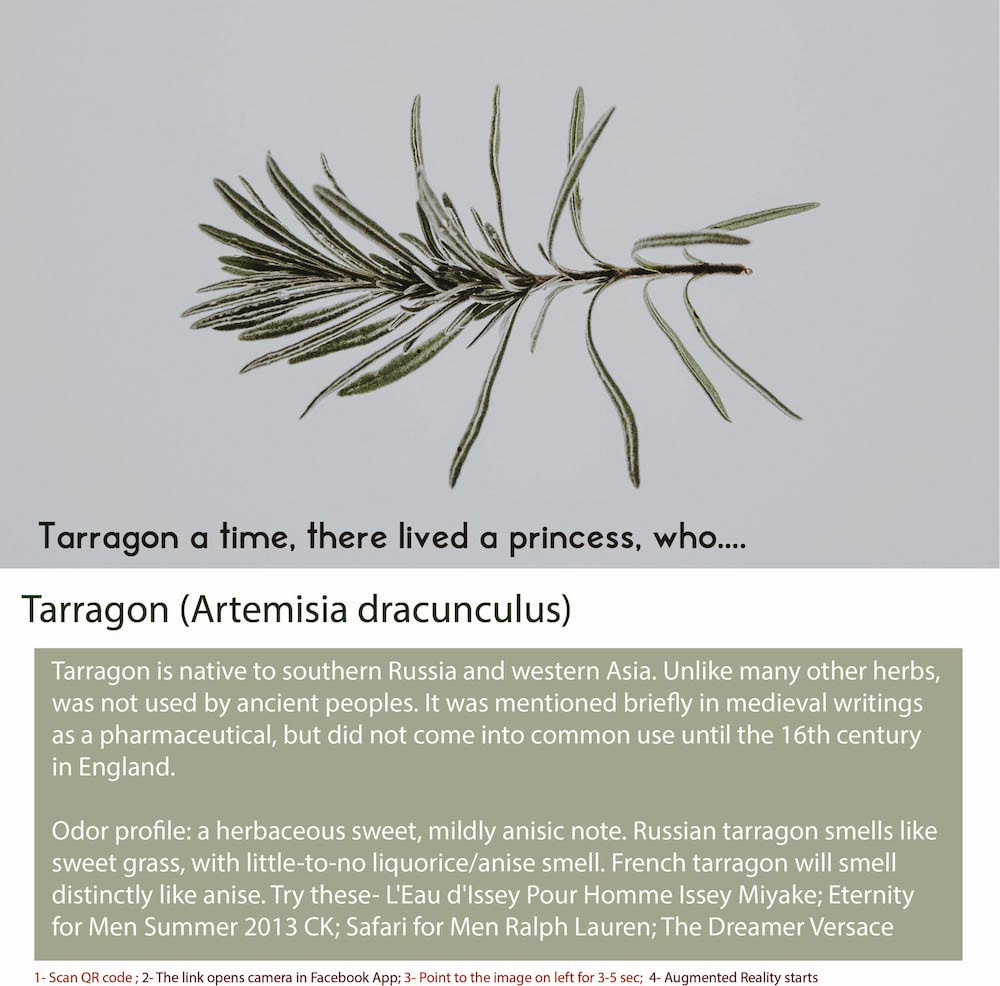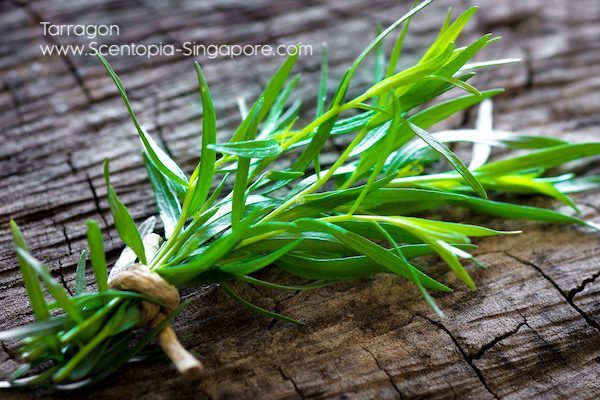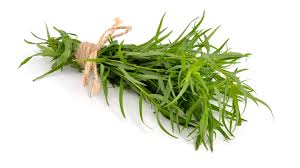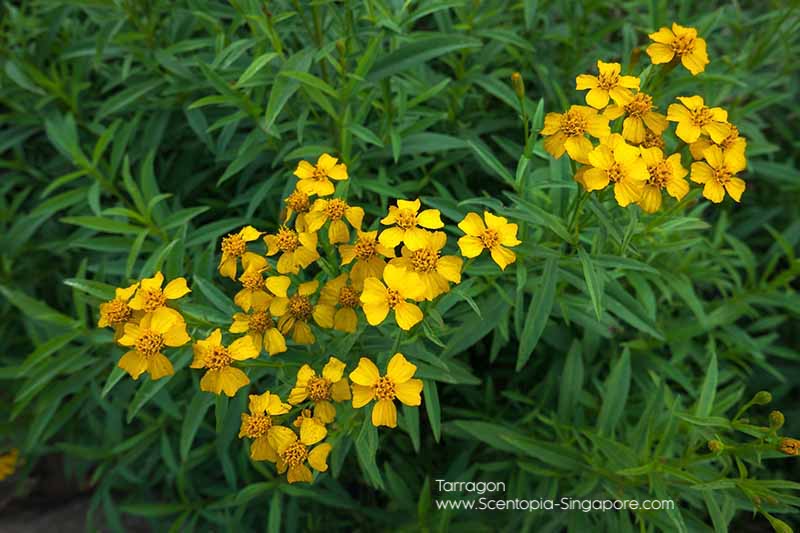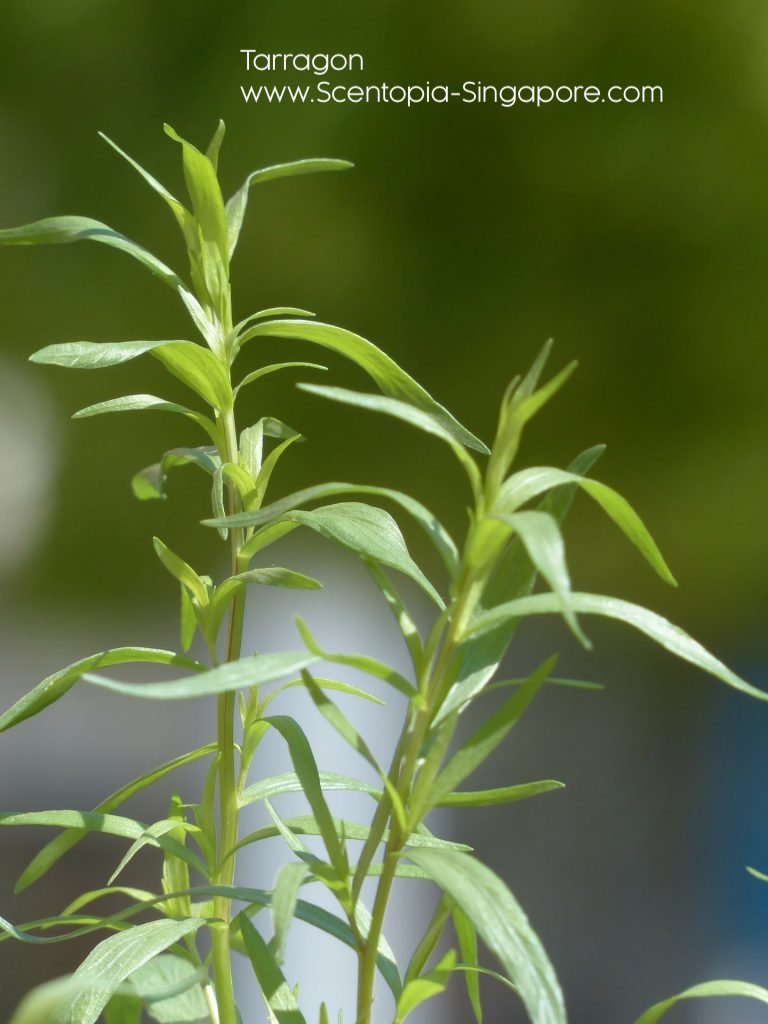Discover the Essence of Tarragon Fragrance
Tarragon: The Fragrant Herb of Culinary Excellence, Therapeutic Potential, and Fascinating Facts
Introduction: Tarragon, with its distinctive aroma and flavorful leaves, is an aromatic herb celebrated for its presence in culinary creations, therapeutic oils, and potential health benefits. Scientifically known as Artemisia dracunculus, tarragon is a perennial herb belonging to the Asteraceae family. This herb has been cherished by various cultures for centuries for its culinary excellence and traditional medicinal uses. From adding a delightful fragrance to dishes to offering potential therapeutic properties, tarragon is more than just a herb. This essay delves into the captivating world of tarragon, encompassing its presence in perfumes, therapeutic oils, food, medicinal systems, historical significance, and intriguing fun facts about this extraordinary and cherished herb.
The Aroma and Flavor of Tarragon: Tarragon is renowned for its distinct aroma, which is often described as sweet and anise-like. Its leaves have a bold and slightly bittersweet flavor that adds depth to culinary creations.
Perfumes and Fragrance: Tarragon's aromatic and sweet fragrance has inspired perfumers to create scents that capture the essence of this delightful herb. Tarragon-inspired perfumes often evoke feelings of freshness, warmth, and sophistication, making them sought-after choices for those seeking an herbaceous allure.
Culinary Excellence: Tarragon is a versatile herb used in various culinary creations, particularly in French cuisine. It pairs well with fish, poultry, vegetables, and is a key ingredient in the classic sauce béarnaise.
Medicinal Applications: Tarragon has a long history of use in traditional medicine systems. It is believed to have potential benefits for digestion, appetite stimulation, and as a mild diuretic. Tarragon herbal teas and tinctures are used for their potential health properties.
Fun and Crazy Facts:
Tarragon, with its aromatic allure and potential wellness benefits, is a cherished and versatile herb that continues to captivate and inspire with its distinctive fragrance and flavorful presence. From its presence in perfumes to its culinary excellence and traditional medicinal uses, tarragon offers a wealth of enjoyment and potential health benefits. As we savor the anise-like aroma and bold flavor of tarragon and explore its cultural significance and historical uses, we are reminded of the enduring appeal and timeless charm of this extraordinary herb that has enriched our culinary traditions, perfumery, and herbal remedies with its unique fragrance and flavorful contribution.
Introduction: Tarragon, with its distinctive aroma and flavorful leaves, is an aromatic herb celebrated for its presence in culinary creations, therapeutic oils, and potential health benefits. Scientifically known as Artemisia dracunculus, tarragon is a perennial herb belonging to the Asteraceae family. This herb has been cherished by various cultures for centuries for its culinary excellence and traditional medicinal uses. From adding a delightful fragrance to dishes to offering potential therapeutic properties, tarragon is more than just a herb. This essay delves into the captivating world of tarragon, encompassing its presence in perfumes, therapeutic oils, food, medicinal systems, historical significance, and intriguing fun facts about this extraordinary and cherished herb.
The Aroma and Flavor of Tarragon: Tarragon is renowned for its distinct aroma, which is often described as sweet and anise-like. Its leaves have a bold and slightly bittersweet flavor that adds depth to culinary creations.
Perfumes and Fragrance: Tarragon's aromatic and sweet fragrance has inspired perfumers to create scents that capture the essence of this delightful herb. Tarragon-inspired perfumes often evoke feelings of freshness, warmth, and sophistication, making them sought-after choices for those seeking an herbaceous allure.
Culinary Excellence: Tarragon is a versatile herb used in various culinary creations, particularly in French cuisine. It pairs well with fish, poultry, vegetables, and is a key ingredient in the classic sauce béarnaise.
Medicinal Applications: Tarragon has a long history of use in traditional medicine systems. It is believed to have potential benefits for digestion, appetite stimulation, and as a mild diuretic. Tarragon herbal teas and tinctures are used for their potential health properties.
Fun and Crazy Facts:
- Origin and Name: Tarragon's name is believed to have originated from the Arabic word "tarkhun," meaning "little dragon," possibly referring to the herb's twisted roots or its potential to soothe snakebites.
- Tarragon in Russian Cuisine: Tarragon is a key ingredient in Russian cuisine, particularly in the famous "tarragon vinegar" used as a condiment for various dishes.
- Tarragon in Traditional Medicine: Tarragon has been used in traditional medicine to alleviate toothaches and to soothe insect bites.
- Tarragon Varieties: There are several varieties of tarragon, including French tarragon, Russian tarragon, and Mexican tarragon, each with subtle differences in flavor and aroma.
- Tarragon as an Insect Repellent: Tarragon has been traditionally used as an insect repellent in gardens to keep pests at bay.
Tarragon, with its aromatic allure and potential wellness benefits, is a cherished and versatile herb that continues to captivate and inspire with its distinctive fragrance and flavorful presence. From its presence in perfumes to its culinary excellence and traditional medicinal uses, tarragon offers a wealth of enjoyment and potential health benefits. As we savor the anise-like aroma and bold flavor of tarragon and explore its cultural significance and historical uses, we are reminded of the enduring appeal and timeless charm of this extraordinary herb that has enriched our culinary traditions, perfumery, and herbal remedies with its unique fragrance and flavorful contribution.
To experience augmented reality, please open the Facebook-app using QR code and point to the image below
Unveiling the Captivating Tarragon Fragrance
Tarragon is a herb with a distinct, anise-like flavor and aroma. It is commonly used in French cuisine, especially in dishes such as béarnaise sauce, and is also used in some Middle Eastern and Mediterranean recipes. The plant is native to Central Asia, but is now widely cultivated in many parts of the world.
Tarragon is also used for medicinal purposes, as it has been claimed to have digestive, antispasmodic, and antifungal properties. However, there is limited scientific evidence to support these claims, and further research is needed.
Tarragon oil, which is extracted from the leaves and stems of the plant, is used in the fragrance and flavor industries to impart a licorice-like aroma and flavor to products. The oil is rich in compounds such as eucalyptol, camphor, and estragole, which are responsible for its distinctive scent and flavor.
Tarragon is also used for medicinal purposes, as it has been claimed to have digestive, antispasmodic, and antifungal properties. However, there is limited scientific evidence to support these claims, and further research is needed.
Tarragon oil, which is extracted from the leaves and stems of the plant, is used in the fragrance and flavor industries to impart a licorice-like aroma and flavor to products. The oil is rich in compounds such as eucalyptol, camphor, and estragole, which are responsible for its distinctive scent and flavor.
Natural Aromas for Men's Grooming
Tarragon is a culinary herb that has been used in cooking for centuries. It is native to Central Asia and has a long history of use in European cuisine, particularly in France. Tarragon is often associated with classic French dishes, such as chicken tarragon and béarnaise sauce.
Tarragon also has a place in folklore and mythology. In ancient times, it was believed to have mystical powers and was used to ward off evil spirits and protect against bad luck. In medieval times, it was also believed to have medicinal properties and was used to treat a variety of ailments.
Tarragon is also mentioned in literature, particularly in works related to food and cooking. For example, in Marcel Proust's "Remembrance of Things Past," the narrator waxes nostalgic about the taste of tarragon in a madeleine dipped in tea.
Tarragon also has a place in folklore and mythology. In ancient times, it was believed to have mystical powers and was used to ward off evil spirits and protect against bad luck. In medieval times, it was also believed to have medicinal properties and was used to treat a variety of ailments.
Tarragon is also mentioned in literature, particularly in works related to food and cooking. For example, in Marcel Proust's "Remembrance of Things Past," the narrator waxes nostalgic about the taste of tarragon in a madeleine dipped in tea.
Here are some fun facts about Tarragon:
- Tarragon is a key ingredient in the French blend of herbs known as "Herbes de Provence."
- The scientific name for tarragon is Artemisia dracunculus, which means "little dragon."
- Tarragon has a unique flavor that is often described as licorice-like or anise-like.
- Tarragon leaves are very fragrant, and can be used fresh or dried to add flavor to dishes.
- Tarragon is a hardy herb and can grow well in a variety of conditions, making it a popular choice for home herb gardens.
- Tarragon has been used as a medicinal herb for centuries, and has been known to have a calming effect on the digestive system.
- In some cultures, tarragon is believed to have aphrodisiac properties, making it a popular ingredient in love potions.
Elevate Your Scented Grooming Experience
Tarragon is commonly used in traditional medicine for its digestive, antispasmodic, and carminative properties. It has been used to relieve nausea, bloating, and indigestion, and it is also believed to have mild sedative effects, making it helpful for reducing anxiety and insomnia. Tarragon is also used to improve the appetite and boost the immune system. Additionally, it has been used to relieve toothaches and other types of pain.
Tarragon has been used in mummification processes by ancient civilizations, such as the Egyptians. They believed that the herb had purifying and preservative properties and used it to embalm the dead. Tarragon leaves were wrapped around the body or placed in the burial chamber to help preserve the body and prevent decay.
Tarragon has been used in mummification processes by ancient civilizations, such as the Egyptians. They believed that the herb had purifying and preservative properties and used it to embalm the dead. Tarragon leaves were wrapped around the body or placed in the burial chamber to help preserve the body and prevent decay.
Tarragon has a distinct, slightly bitter, and anise-like aroma. It is often described as fresh, licorice-like, and slightly sweet. The scent is due to the presence of compounds such as estragole, phellandrene, and eucalyptol in the essential oil of tarragon.
Tarragon essential oil contains various chemical compounds including estragole (methyl chavicol), phellandrene, eucalyptol, and others, which contribute to its unique scent profile. These compounds are responsible for the anise-like and licorice-like aroma, as well as its slightly sweet and fresh notes.
Tarragon essential oil contains various chemical compounds including estragole (methyl chavicol), phellandrene, eucalyptol, and others, which contribute to its unique scent profile. These compounds are responsible for the anise-like and licorice-like aroma, as well as its slightly sweet and fresh notes.
Aromatic Herbal Scents for Men
Tarragon is not a commonly used ingredient in perfumes, but it can be found in some niche fragrances due to its unique aroma. It is often used as a secondary or complementary note to enhance and add complexity to the overall scent. Some perfumes that feature tarragon include:
- L'Artisan Parfumeur's Dzongkha
- Le Labo's Santal 33
- Eight & Bob's Original Collection
- Vero Profumo's Onda
- Jo Malone's Basil & Neroli
- Comme des Garcons' Series 3: Incense, Zagorsk
Join Scentopia, Sentosa's latest tourist attraction wonderful orchid scent crafting, fragrance tour, bridal shower or corporate team building which includes perfume making onsite and offsite, beach activities and more. We also serve primary school learning journey, secondary students and pupil on industrial excursions. Know more about our orchids perfume bar or therapeutic orchid scents and other wellness aromas. Conatct Perfume workshop or book a scent crafting session here.

